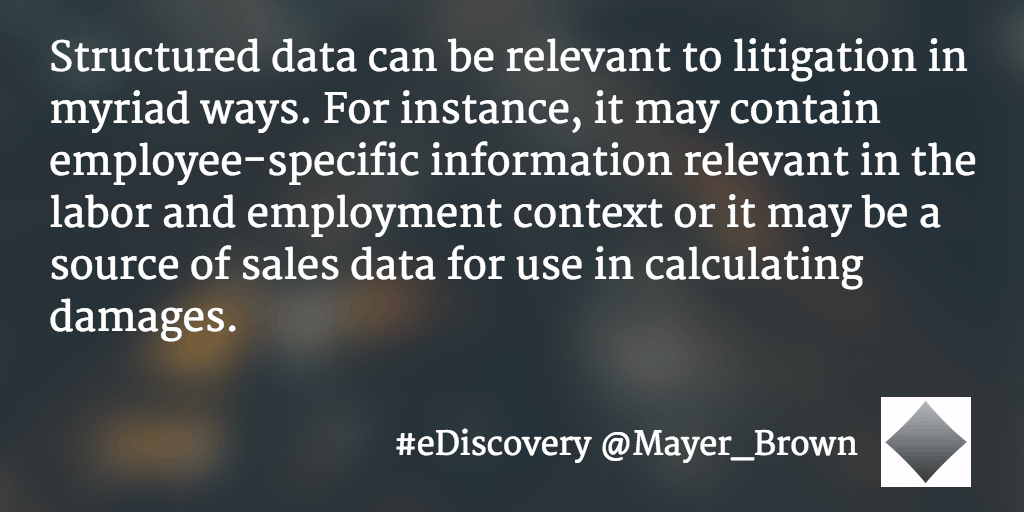ARCHIVED CONTENT
You are viewing ARCHIVED CONTENT released online between 1 April 2010 and 24 August 2018 or content that has been selectively archived and is no longer active. Content in this archive is NOT UPDATED, and links may not function.Mayer Brown Newsletter
Structured Data in Litigation
Structured data resides in a defined field within a database record or file, most commonly in a relational database or spreadsheet. Examples of structured data include databases maintained in programs such as Microsoft Excel and Access, Oracle’s PeopleSoft, and various relational database products from SAP, which often contain records of sales, products, employees, prices, accounting data or financial statements. By contrast, examples of “unstructured” data include memoranda and presentations, e-mails and scanned correspondence.
Structured data can be relevant to litigation in myriad ways. For instance, it may contain employee-specific information relevant in the labor and employment context or it may be a source of sales data for use in calculating damages. Structured data often plays a prominent role in fighting class certification, and companies increasingly rely on structured data to oppose motions for class certification by demonstrating that plaintiffs lack commonality and typicality. Examples of such data include: information related to compensation and salary data for all employees of a company in a putative employment discrimination class action; pricing and sales data in a putative antitrust class action; and transactions involving a company’s stock in a putative securities class action.
Read the complete scenario at: Structured Data in Discovery and Class Certification























